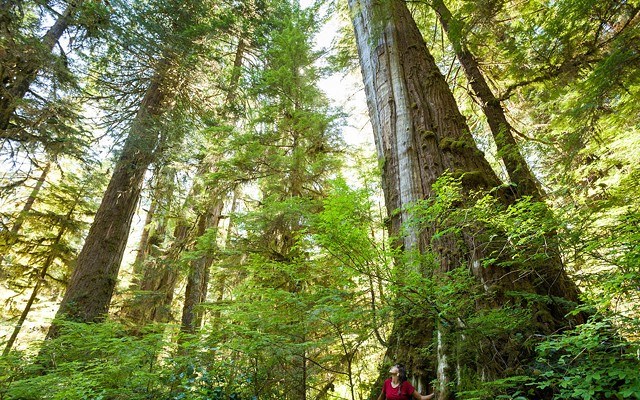B.C.’s recent heatwave smashed temperature records all over the province. Over 700 people died in three days, the majority of which were likely due to the extreme heat. That’s pretty close to half of the total number of people who have died from COVID-19 in B.C. since the start of the pandemic.
Yet we don’t have daily press conferences on the climate emergency like we did for COVID, and the climate crisis gets a fraction of the media coverage that the pandemic did.
After breaking the highest temperature record in Canada for three days in a row, topping out at 49.6 C, the town of Lytton burned to the ground.
There are currently hundreds of fires going on in B.C., and the BC Wildfire Service predicts the summer will continue to be bad for fires due to hot and dry conditions.
Experts estimate about a billion sea creatures including mussels, clams and oysters literally cooked to death in the sweltering heat.
Fruit crops in the Okanagan didn’t survive the heat either and died on their branches, leaving farmers with a huge loss of revenue
Extreme heatwaves and wildfires shouldn’t really be that surprising though, as scientists have been predicting these events would become more frequent and intense for decades. In the past scientists have been reluctant to connect any one extreme weather event to climate change, but that is starting to change.
One study showed the heat dome that engulfed B.C. and the western U.S. would have been virtually impossible if it were not for human-caused climate change. Extreme weather events from climate change are impacting people’s mental health in what is called eco-anxiety or climate grief.
One of our best defenses against climate breakdown are old-growth forests. Trees, some of which are hundreds if not thousands of years old, capture and sequester carbon. They are also wonderful sources of biodiversity, hosting a variety of plant and animal species. Logging companies point to reforestation efforts in defense of their practices, but the reality is old growth forests are irreplaceable. Plantations are monocultures that lack diversity and age differentiation between trees. As a result they are more susceptible to disease and wildfires.
With less than 3% of B.C.’s land covered in old growth forest, you would think that what little is left of our old-growth forests would be protected. False. We log more and more of our old growth forests every year in B.C.. One place this is planned is Fairy Creek on Vancouver Island. People largely with the group Rainforest Flying Squad have set up several blockades in the area for several months in an effort to stop the logging of old-growth trees. Over 370 people have been arrested to date.
If we want to protect ourselves from extreme weather events and slow the effects of climate change, we need to protect our old-growth forests. In order to do this we need to put enough pressure on the provincial government to enact logging deferrals in all areas in B.C. that have been identified as having old-growth trees. If you can, go to Fairy Creek. If you can’t, there are many other ways you can get involved. It can be as simple as calling your MLA, writing to Premier John Horgan, or donating to the cause. Go to laststandforforests.com to find out more.
Calvin Beauchesne, MA Environmental Studies, Squamish



